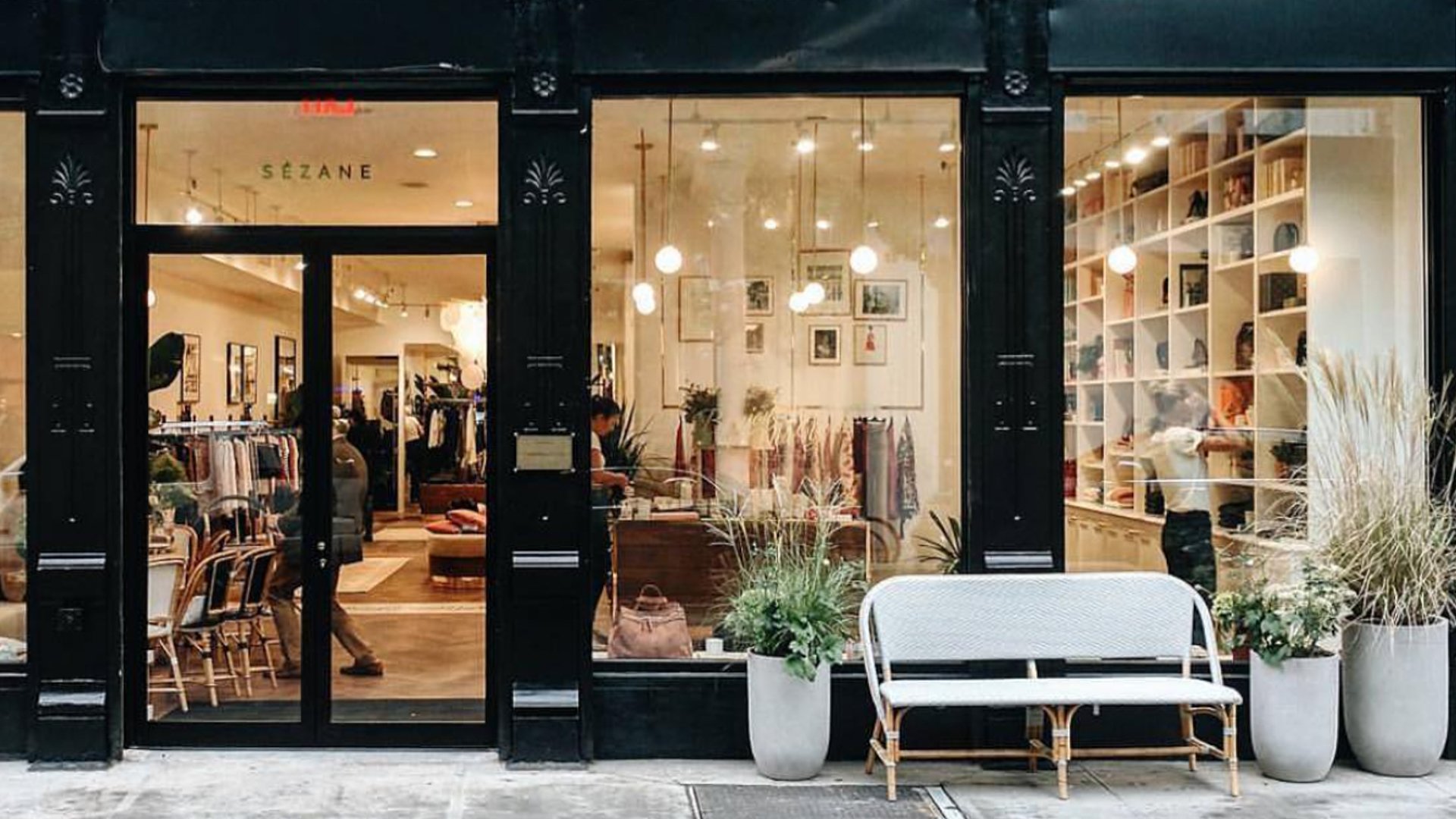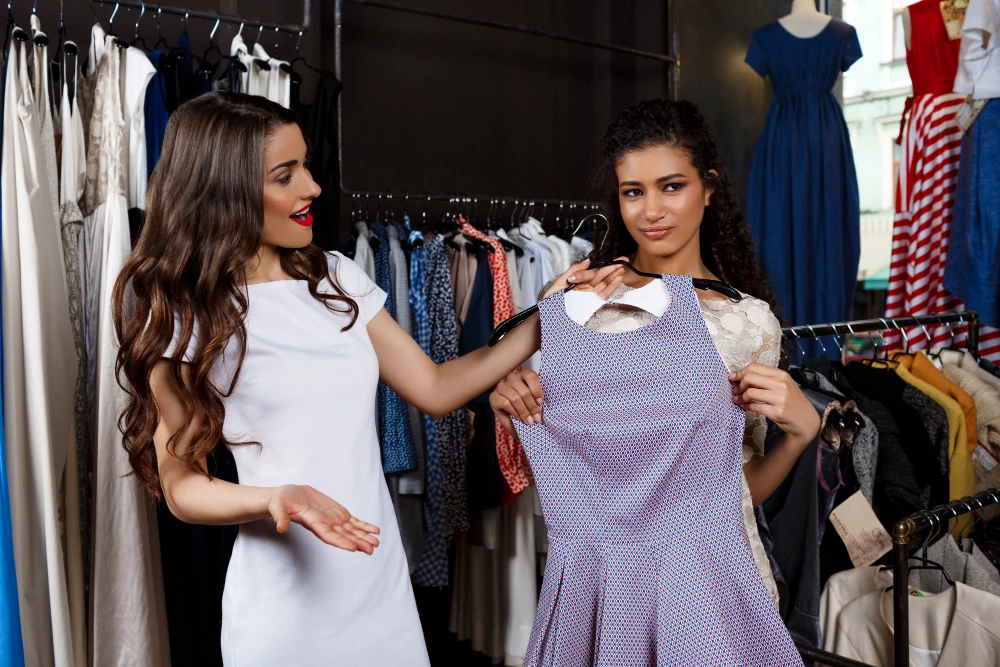The Surge of Online Buying: Searching For Boutique Fashion at Your Fingertips
The Surge of Online Buying: Searching For Boutique Fashion at Your Fingertips
Blog Article
Lasting Fashion: How Eco-Friendly Apparel Is Forming the Future of Style
As the apparel industry deals with boosting examination over its ecological effect, the surge of sustainable style supplies an encouraging option that lines up design with eco-friendly duty. Utilizing ingenious materials such as plant-based fabrics and recycled fibers, along with innovative approaches like electronic and 3D printing, designers are redefining what it suggests to be stylish in the modern-day age. Concurrently, the growing popularity of upcycling and thrift culture is fostering a change in the direction of a circular economic situation. Yet, exactly how does this movement really influence the future trajectory of fashion, and what obstacles exist in advance in its widespread fostering?
Innovative Lasting Products
As the garment industry comes to grips with its ecological influence, innovative sustainable products have arised as an essential service for reducing eco-friendly impacts. Amongst the most promising products are those originated from natural, renewable resources, such as natural cotton, hemp, and bamboo. These materials not only reduce dependency on nonrenewable fuel sources but likewise lessen unsafe pesticide use and water intake. Organic cotton, for instance, makes use of dramatically less water than traditional cotton and removes the requirement for toxic chemicals, therefore protecting soil wellness and biodiversity.
In addition to plant-based products, developments in biofabrication have actually resulted in the advancement of lab-grown fabrics. Mycelium leather, originated from mushroom origins, provides a flexible and eco-friendly option to pet leather. Its manufacturing results in substantially reduced carbon discharges and water usage, making it a more sustainable choice for fashion designers seeking to straighten with green methods.
Recycled materials are also obtaining grip, with polyester made from recycled plastic bottles representing a considerable breakthrough. This innovation not only diverts plastic waste from garbage dumps and seas but likewise lowers power usage contrasted to creating virgin polyester. Together, these materials underscore the capacity for a more lasting fashion business, leading the way for eco mindful design and production.
Eco-Conscious Manufacturing
Structure on the developments in sustainable products, the style sector is additionally re-evaluating its manufacturing procedures to additionally lower ecological impact. Key approaches include decreasing water intake, decreasing carbon discharges, and getting rid of unsafe chemicals.
An additional important element is the decrease of poisonous chemicals traditionally utilized in coloring and ending up textiles. Eco-conscious suppliers are moving in the direction of plant-based dyes and waterless dyeing innovations, which not just safeguard regional ecological communities however additionally improve worker security. Technologies like electronic printing reduce textile waste and energy intake, supplying a cleaner option to traditional approaches.
Moreover, transparency and traceability have actually become critical. With the innovation of blockchain modern technology, firms can now provide in-depth insights right into their supply chains, making certain eco friendly and honest techniques at each action. This transparency builds consumer trust fund and motivates brands to keep high sustainability standards. As the need for eco-conscious items expands, producers are obliged to introduce, making sure that the future of fashion is both trendy and sustainable.
The Increase of Upcycling
Upcycling, a transformative technique in sustainable fashion, involves artistically repurposing disposed of materials into brand-new, top notch items. This cutting-edge method not only lowers waste yet additionally decreases the need for raw materials, thus minimizing the environmental effect of clothing manufacturing. By reimagining and rebuilding existing items, designers and style brand names are able to infuse originality right into their collections while advertising environmental duty.

Additionally, the upcycling movement has equipped local business and independent developers, that often lead in development due to their agility and creative thinking. By maximizing the plentiful availability of extra products, these entities add to a round economic climate, demonstrating that fashion can be both stylish and lasting. Via upcycling, the industry takes significant strides in the direction of a more responsible and mindful future.
Thrift Culture's Influence
The growing second hand culture substantially reshapes the landscape of lasting fashion, stressing the value of conscious intake. This cultural change motivates consumers to accept pre-owned clothes, therefore minimizing the need for new garment production and reducing ecological impact. Second hand purchasing not just expands the lifecycle of apparel however also reduces the carbon impact related to production, carrying, and getting rid of garments.
An essential aspect of second hand society is its democratization of fashion. By using a large selection of designs from various ages at cost effective prices, thrift shops make style available to a more comprehensive target market. This availability cultivates a sense of originality and creative thinking, as consumers mix and match unique pieces to curate tailored closets without adding to the fast fashion cycle.
Furthermore, click here for more second hand society advertises circularity in vogue, lining up with the concepts of a round economic situation. By recirculating garments, the cycle of waste is interfered with, and sources are preserved. This technique sustains a shift from a direct "take-make-dispose" design to an extra lasting framework. As more customers and developers accept second hand society, the garment industry is obliged to adjust, integrating sustainable methods to satisfy the expanding need for eco-conscious alternatives.

Future Trends in Fashion
Fashion's development is significantly formed by technological innovations and sustainability-driven initiatives. As customers end up being extra ecologically mindful, the sector is responding with groundbreaking innovations that redefine the future of style. One noticeable pattern is the rise of digital style, where virtual garments can be used in augmented truth environments, significantly lowering material waste. This change not only provides to the digital-savvy customer yet likewise decreases the environmental impact traditionally related to garment manufacturing.
Additionally, the integration of blockchain technology uses brand-new possibilities in openness and traceability, enabling consumers to confirm the sustainability qualifications of their apparel. boutique fashion. This makes certain accountability in supply chains and promotes ethical sourcing techniques. 3D printing is yet one Recommended Reading more advancement that guarantees to reinvent making processes by making it possible for on-demand manufacturing, thereby reducing excess inventory and waste
As these innovations mature, they are positioned to change the fashion landscape, combining design with sustainability. The future of fashion, for that reason, lies in a smooth blend of modern technology, technology, and eco-friendly obligation.
Conclusion
The transformation of the fashion business via lasting methods indicates a crucial shift towards environmental liability. The combination of cutting-edge products, eco-conscious manufacturing methods, and the embracement of upcycling and second hand society highlights a dedication to lowering environmental footprints. As these methods get momentum, they redefine the market's narrative by prioritizing moral and sustainable selections. This development not just lines up style with environmental sustainability but additionally establishes a precedent for future patterns focused on obligation and development.
As the fashion industry deals with increasing scrutiny over its environmental effect, the rise of lasting fashion supplies a promising option that lines up design with ecological obligation.As the fashion sector grapples with its ecological impact, innovative lasting materials have actually emerged as an essential solution for decreasing eco-friendly impacts. With each other, these products underscore the potential for a much more lasting fashion market, paving the method for eco aware design and production.
Building on the innovations in sustainable materials, the fashion market is likewise re-evaluating its manufacturing processes to even more minimize environmental effect. boutique fashion.Upcycling, a transformative method in try here lasting style, entails artistically repurposing thrown out materials into new, top notch items
Report this page